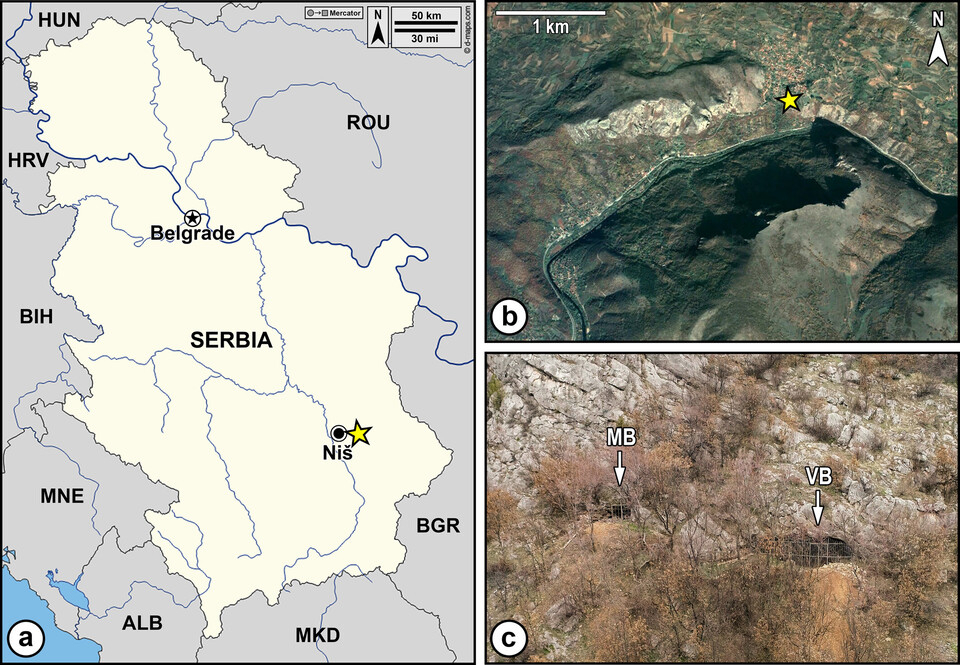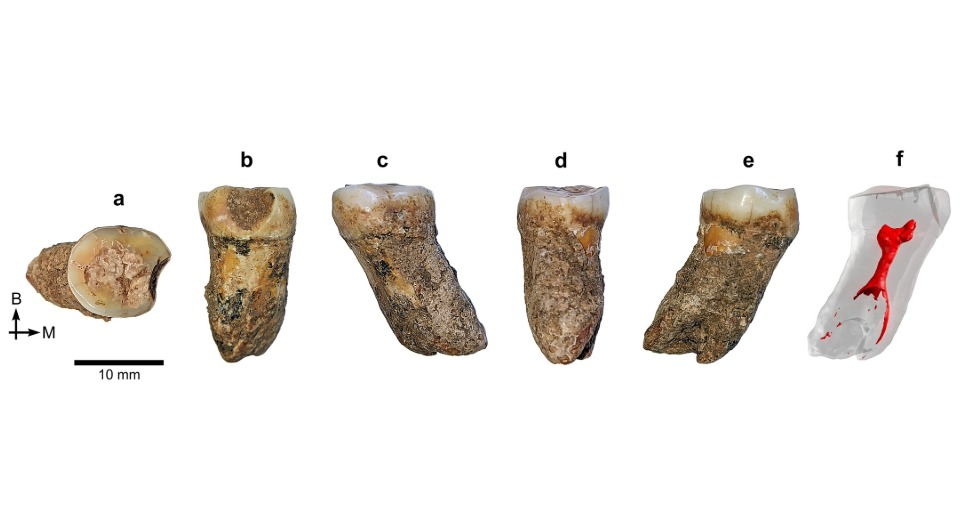In southern Serbia’s Velika Balanica Cave, archaeologists uncovered the oldest Neanderthal remains in the Balkans, dating back about 300,000 years.
This quiet valley near Niš was once home to a thriving group of archaic humans long before modern humans set foot on the continent.

Teeth That Tell a Story
Between 2011 and 2020, excavations revealed four human teeth buried alongside Mousterian stone tools — the calling card of Neanderthal craftsmanship.
Each tooth tells its own story:
- BH-8: a perfectly preserved upper incisor, barely worn, as if frozen in time.
- BH-7: a lower incisor, smaller but unmistakably Neanderthal.
- BH-18: a fragment of another front tooth, hinting at a larger population nearby.
- BH-15: a powerful molar with a large pulp chamber — a “bull-tooth” — showing signs of wear that may come from using teeth like tools.
These discoveries double the known number of early Neanderthal fossils in the region — a leap forward for Balkan archaeology.

What Life Looked Like 300,000 Years Ago
The layers of the cave paint a vivid picture:
bones of ibex and other prey, stone tools chipped with skill, and traces of ancient hearths.
The Neanderthals who lived here were hunters, craftsmen, and survivors, navigating a land of steep cliffs and shifting climates.
Even their teeth carry hints of their lifestyle — the damage and wear suggest gritty diets and practical uses of their jaws, perhaps for softening hides or holding tools.
Why the Balkans Matter More Than We Thought
Most Neanderthal discoveries come from Western Europe — France, Spain, Germany. But the Balkans were the bridge between Europe and Asia, a vital migration route for early humans.
Finding such ancient remains here suggests these mountains were not a fringe, but a core zone of Neanderthal life — where early human groups met, evolved, and shared technologies.
A Window into Our Ancient Cousins
Every find from Velika Balanica helps fill a missing page in our species’ prehistory.
The site shows that Neanderthals didn’t just adapt to the harsh north — they thrived in the heart of southeastern Europe, shaping tools, hunting game, and leaving traces of a deep-rooted culture.
Researchers continue to study these fossils for microscopic wear, isotopic signatures, and DNA — each test bringing us closer to understanding who these early humans really were.
Echoes in the Stone
What’s striking about Velika Balanica isn’t just its age — it’s the feeling that this quiet cave once echoed with life.
The crunch of bone underfoot, the crackle of firelight, and the shared ingenuity of a species that wasn’t so different from us.
The Neanderthals of the Balkans remind us that history doesn’t just belong to the famous sites of France or Spain. Sometimes, the most powerful stories lie hidden in the hills of Serbia — waiting for a single tooth to bring them back to life.
Sources:
New Middle Pleistocene Hominin Dental Remains From Velika Balanica, Serbia
If you like this story check out : Neanderthals Had Local Food Traditions, Study Finds

